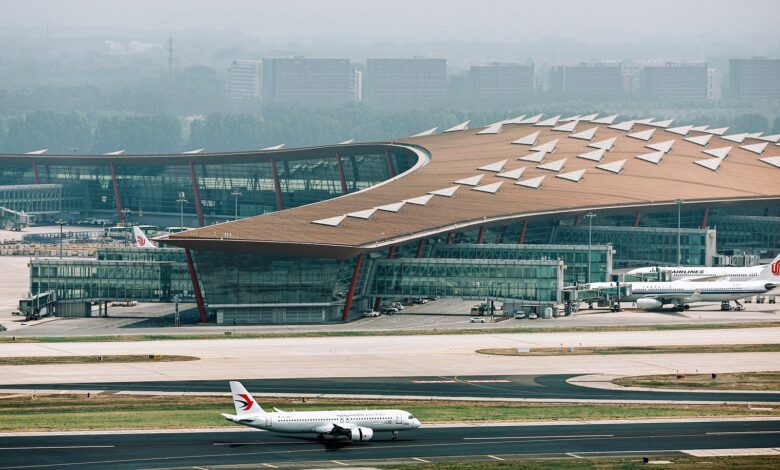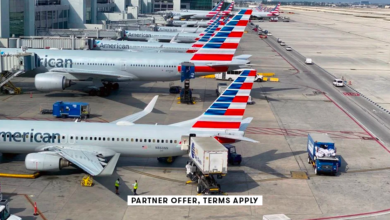Flights from the US to China are just a quarter of what they were before the pandemic — here’s why

China is a booming opportunity for United Airlines Launch of flights to Chengdu a decade ago
“China is a market that is an economy that continues to grow at a very strong pace. And there are a lot of opportunities in China that you can grow the market, especially with [Boeing] 787,” Jim Compton, United’s then chief revenue officer, said in July 2014.
Chengdu is part of the Chicago-based airline’s “secondary Asian city strategy.” The strategy also includes a return to Taipei, Taiwan, the same year Chengdu service was launched, and in 2016, Add Xi’an city of China on the airline’s map. The airline’s future in China looks bright.
Want more airline specific news? Sign up for TPG’s free bi-weekly Aviation newsletter.
United is not alone. The number of seats operated by all airlines between the United States and China has increased by nearly 67% since 2014, peaking at 5.3 million in 2018, according to Cirium Diio schedules. Airlines served a market of 5.2 million seats in 2019.
Despite complaints of competitive pressure – particularly from US airlines facing Chinese competitors – the region is still seen as an opportunity.
Fast forward to today — after a global pandemic and geopolitical recalibration — things look very, very different for airlines flying from the United States to China.
“Demand to China has been down significantly compared to 2019,” Andrew Nocella, United’s current chief commercial officer, said in July. “And it’s also hard to fly there because of the lack of overflight capacity in Russia. So those two combinations just make this the new normal.”
That “new normal,” as Nocella puts it, is one where flights are strictly limited to 100 a week (50 for each country’s airlines). It’s one where Russian airspace is closed to U.S. airlines but not to the country’s Chinese partners. It’s also one where fewer Americans travel to China than Chinese citizens travel to the United States.

Daily News
Reward your inbox with the TPG Daily newsletter
Join over 700,000 readers to get the latest news, in-depth guides, and exclusive offers from TPG experts
What about United’s Chengdu flight? That flight hasn’t operated in four years.
Some direct flight options from the United States to China
David Yu knows what it’s like to fly between the United States and China. As a finance professor at New York University Shanghai and president of Asia Aviation Valuation Advisors, he frequently flies between the Washington, DC area and Shanghai.
When asked about the experience, Yu’s first reaction was: “It was expensive.”
When to go: This is the best time to buy international flights
The high costs are a result of scarce supply. U.S. airlines operate just 39 weekly nonstop flights, and their Chinese counterparts operate 50, for a total of 89, according to Cirium Diio’s schedule. Before the coronavirus pandemic, there were about 340 weekly flights—nearly four times what there are now.
American Airlines serves Shanghai daily from its Dallas-Fort Worth hub, and Delta Air Lines connects the city to Detroit and Seattle. United Airlines, meanwhile, connects Beijing and Shanghai to San Francisco, according to Cirium Diio. Air China, China Eastern Airlines, China Southern Airlines, Hainan Airlines, Sichuan Airlines and Xiamen Airlines have also resumed some flights.
“Flights from the United States are very expensive,” Yu said. “I’m looking at flights that are $2,000 to $2,500 round-trip economy class, and before COVID-19, those were $800 to $1,000.”
The cost of a round-trip economy ticket between Washington, DC, and Shanghai with just one stop in each direction—the shortest available route—was more than $1,900 on American and Delta in mid-September, according to Google Flights. Travelers can find no-frills basic economy fares for closer to $1,500, but those don’t include seat selection or free changes.
‘Political aviation challenge’
In a filing with the U.S. Department of Transportation in February, Delta cited “ongoing aviation political challenges” in asking to postpone 32 of its 42 weekly U.S.-China flight rights until October.
A Delta spokesperson did not elaborate on what the airline meant by the phrase “aviation political challenge.”
In a letter to the U.S. State Department and DOT in April, the trade group Airlines for America — which counts American, Delta and United among its members — highlighted the “competitive disadvantage” U.S. airlines face compared to their Chinese rivals due to unable to fly over Russian airspace.
The time difference can be huge. Delta’s nonstop flight to Shanghai from Detroit—the easternmost airport gateway to China among U.S. airlines that avoid Russian airspace—is scheduled to take 15 hours and 40 minutes, according to Cirium Diio. That’s 40 minutes longer than China Eastern Airlines’ nonstop flight from New York City to Shanghai, which flies over Russia (though the Detroit-Shanghai route is about 250 miles shorter).
The slow return of American tourists
Even after COVID-19 travel restrictions eased, the number of travelers between the United States and China remains a fraction of what it was in 2019. Just 1.2 million people flew between the two countries in the first seven months of 2024, compared with 5.1 million five years earlier, according to Data from the United States International Trade Administration.
Not only is the overall number of US-China travelers down, but the market has been hit particularly hard by a drop in American travelers, who are more likely to buy tickets on US airlines. The drop in Chinese travelers has been less dramatic, which could give Chinese-flagged airlines an incentive to fly at the expense of US carriers. Data shows that Americans flew between the two countries by 3% in the first seven months of this year compared to 2019. Foreign travelers, the vast majority of whom are Chinese, have increased by a similar amount.
The ITA data includes anyone flying between China and the United States. It includes those flying directly as well as travelers who choose to take a connecting flight through a hub in a third country, like South Korea or Japan.
There are certainly many variables that are slowing the recovery of U.S. tourism to China, including high airfares and changing business travel habits, Yu said.
“People who want to go will go, people who think there’s an opportunity will go. People who are more comfortable, I’m sure they’re using Zoom and working remotely more than they are flying,” he said.
Read more related:




